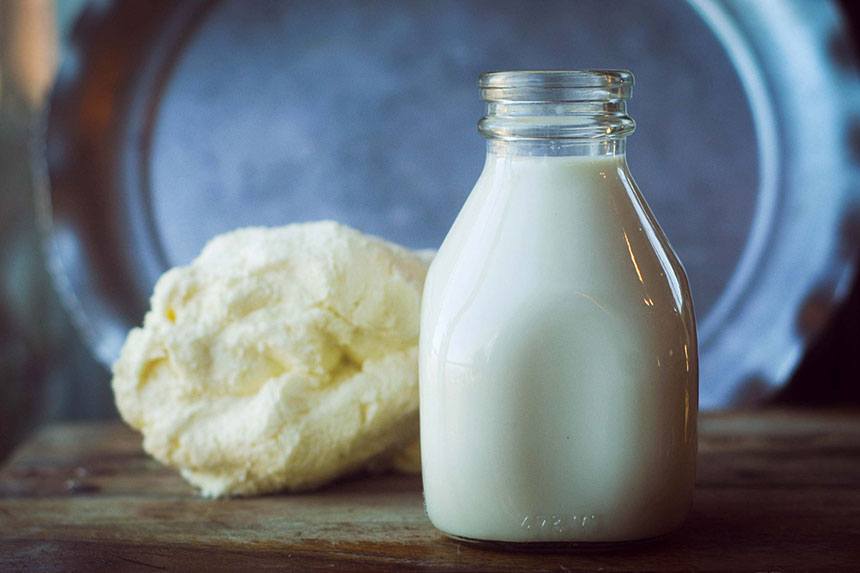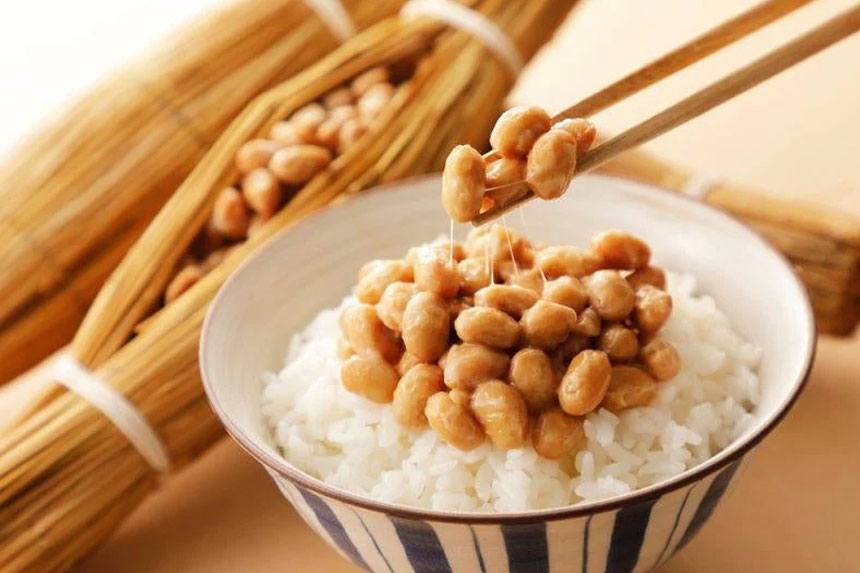Traditional Buttermilk

Traditional buttermilk, the by-product of butter-making, stands out as a source of probiotics, particularly in cultures where it’s consumed regularly, such as in India, Nepal, and Pakistan. Unlike its cultured counterpart commonly found in Western supermarkets, traditional buttermilk contains live cultures, earning its reputation as “Grandma’s probiotic.” This version is not only a nod to culinary heritage but also a low-fat, nutrient-rich beverage offering vitamins B12, riboflavin, calcium, and phosphorus.
The distinction between traditional and cultured buttermilk illuminates the diversity within fermented dairy products and their health benefits. Traditional buttermilk, in its simplicity, carries a wealth of nutritional benefits, linking modern health trends to ancestral dietary practices. Its consumption reflects a blend of tradition and nutrition, making it a valuable addition to a health-conscious diet.
Natto

Natto, a fermented soybean dish with a distinctive texture and flavor, is a staple in Japanese breakfasts. Its fermentation process introduces Bacillus subtilis, enriching natto with probiotics. Known for its high protein content and a notable source of vitamin K2, natto has been linked to improved bone and cardiovascular health. A study in 2020 highlighted its role in reducing osteoporosis fractures among postmenopausal women, underscoring natto’s nutritional value.
The unique aspects of natto, from its preparation to its consumption, reflect the depth of fermentation’s role in enhancing the nutritional profile of foods. Its intense flavor and texture make it a distinctive yet integral part of Japanese cuisine, offering a testament to the power of fermented foods in supporting health and wellness across cultures. [8]





